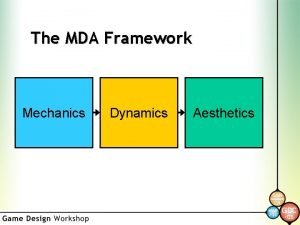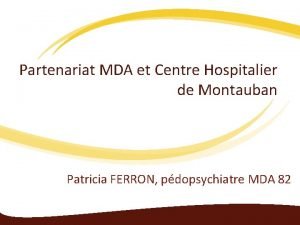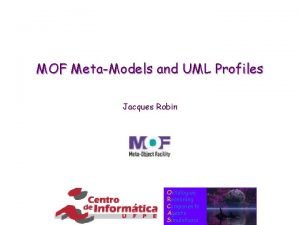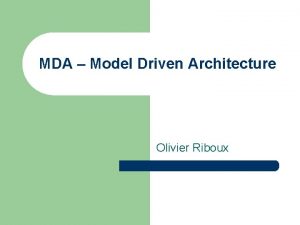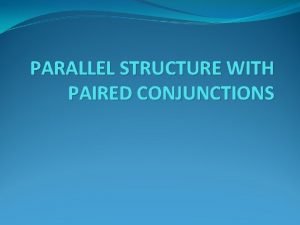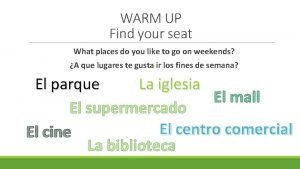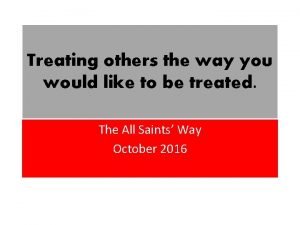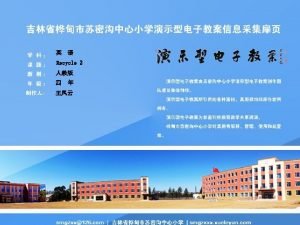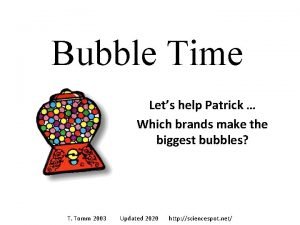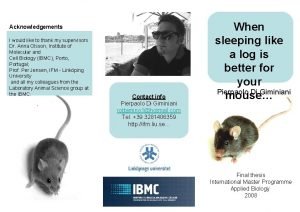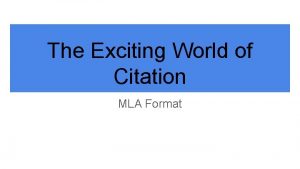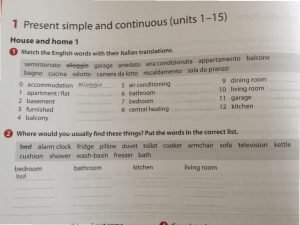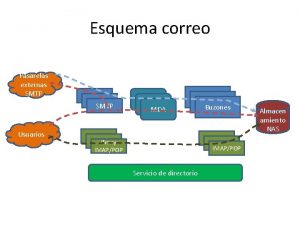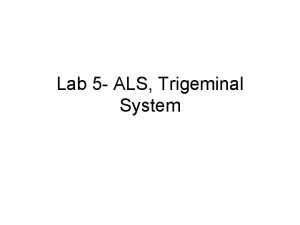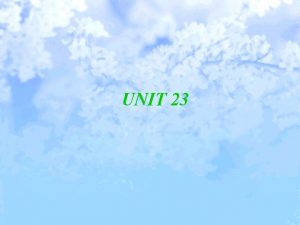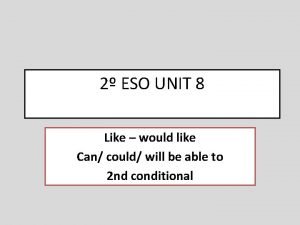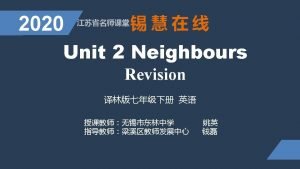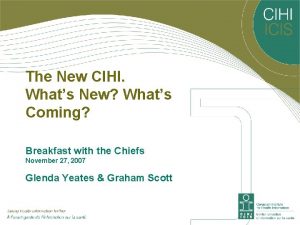Whats New In ALS MDA would like to







































- Slides: 39

What’s New In ALS

MDA would like to acknowledge Dr. Robert L. Sufit and Dr. John M. Coleman III of Northwestern University Feinberg School of Medicine and Les Turner ALS Center for their support in developing this content.

Introduction to ALS Amyotrophic lateral sclerosis (ALS), first described in the 19 th century, is a progressive, presently incurable neurodegenerative disorder that causes muscle weakness, disability, and eventually death. ALS is also known as Lou Gehrig's disease, after the famous NY Yankee baseball player affected with the disorder. Prevalence • 2. 7 to 7. 4 cases per 100, 000 people/year in Europe and North America 4, 5 Cases per 100, 000 population Incidence • 1. 5 to 2. 7 cases per 100, 000 people/year in Europe and North America 1, 2 • In the US, ALS rates are higher among whites compared with other races 3, 4 Prevalence estimate by age 4 25 20 15 10 5 0 18– 39 40– 49 50– 59 60– 69 70– 79 ≥ 80 1. Jordan, Rechtman et al. 2015. 2. Logroscino, Traynor et al. 2010. 3. Roberts, Johnson et al. 2016. 4. Mehta, Kaye et al. 2018. 5. Byrne, Walsh et al. 2011. :

Risk factors and genetic causes Age and smoking Age 1 and family history are the only established risk factors for ALS Accumulating evidence implicates cigarette smoking as a risk factor for ALS 2 -4 Genetic Susceptibility • • About 5% of all ALS cases are inherited (f. ALS) in a Mendelian inheritance pattern 5 • Genetics explain about 61% liability in ALS even in patients with no family history 6 • Patients with sporadic ALS show mutations in genes associated with f. ALS Variations in more than 40 different genes and loci appear to be associated with ALS susceptibility 7 • Known f. ALS genes include: C 9 ORF 72 (>20%), SOD 1 (13 -20%), TARDBP, FUS, ANG, OPTN, SETX, and SQSTM 1 • The most common ALS mutation in European patients is the C 9 orf 72 repeat expansion; mutations in SOD 1 are the most common mutations in Asia 5 • Susceptibility genes not associated with f. ALS include: TBK 1, ATXN 2, C 21 ORF 2, ITPR 2, and NEK 18 genes, and duplications in the SMN 1 gene Eisen, Schulzer et al. 1993. 2. Armon 2009. 3. Gallo, Bueno-De-Mesquita et al. 2009. 4. Sutedja, Veldink et al. 2007. 5. Byrne, Walsh et al. 2011. 6. Al-Chalabi, Feng et al. 2010. 7. nton, Chio et al. 2014. 8. Kenna, van Doormaal et al. 2016. 4

Prognosis Survival characteristics of the disease • • Presenting features associated with prolonged survival in ALS Most ALS patients die within 3 to 5 years of diagnosis ~30% of ALS patients are alive 5 years after diagnosis, and 10 -20% survive for >10 years Survival beyond 20 years is rare, but possible, and depends in part upon treatment decisions made by patients and their families Factors associated with more favorable survival 1 -4 include: • • • Prolonged time from onset to diagnosis Younger age of onset Pure UMN signs Pure LMN signs No dyspnea at onset • • Nonbulbar region of onset Normal weight/nutrition status at diagnosis Nonfamilial ALS Normal cognition at diagnosis – Younger age at symptom onset – Limb rather than bulbar symptom onset 1. Eisen, Schulzer et al. 1993. 2. Jablecki, Berry et al. 1989. 3. Strong, Hudson et al. 1991. 4. Westeneng, Debray et al. 2018. 5

Mechanism of disease – The etiology of ALS is not established Microglia A number of mechanisms have been proposed: 1 • • • Abnormalities in RNA metabolism SOD 1 -mediated toxicity Excitotoxicity Cytoskeletal derangements Mitochondrial dysfunction Viral infections Apoptosis Growth factor abnormalities Inflammatory responses Oligodendrocyte Hyperexcitability SOD 1 Axonopathy SOD 1, SPO 11, TUBA 4 A, PFN 1, DCTN, PRHPH, and NEFH Oxidative stress SOD 1, ALS 2, and TARDBP Astrocyte Impaired protein homeostasis SIOMAR 1, CHMP 2 B, C 9 orf 72, SQSTM 1, UBQLN 2, SOD 1, ALS 2, VAPB, OPTN, VCP, and TBK 1 Mitochondrial dysfunction SOD 1, CHCHD 10, and TARDBP Dysregulated vesicle transport SOD 1, ALS 2, FIG 34, VAPB, OPTN, UNC 13 A, and CHMP 2 B One disease or a syndrome group with many etiologies? Nuclear export C 9 orf 72 Pathologic mutations in various unrelated pathways Impaired DNA repair NEK 1, C 21 orf 2, SPG 11, and FUS 1. Peters, Ghasemi et al. 2015. 2. Hardiman, Al-Chalabi et al. 2017. Glial dysfunction SOD 1 & C 9 orf 72 Aberrant RNA metabolism SETX, FUS, ANG, TARDBP, ELP 3, TAF 15, EWSR 1, ATXN 2, HNNRNPA 1, C 9 orf 72, HNRNPA 2 B 1, and MATR 3 Adapted from 2` 6

Mechanism of disease ALS is characterized by: • • Motor neuron degeneration and death with gliosis replacing lost neurons Loss of cortical motor cells (pyramidal and Betz cells), leading to retrograde axonal loss and gliosis in the corticospinal tract Spinal cord atrophy Thinning of ventral roots Loss of large myelinated fibers in motor nerves Denervation atrophy of affected muscles with evidence of reinnervation such as fiber type grouping Intracellular inclusions in degenerating neurons and glia 1. Ciervo, Ning et al. 2017. Molecular mechanisms in the pathology of ALS 1) 2) 3) 4) 5) Adapted from 1 Impaired glutamate clearance leads to neuronal excitotoxicity Protein aggregate formation, RNA toxicity, and mitochondrial dysfunction Pro-inflammatory cytokines from predominant M 1 activated microglia Failure of axonal architecture and transport Synaptic failure, denervation, and muscle atrophy

Diagnosing ALS

When to refer to neuromuscular specialist The diagnosis of ALS is suggested when there are progressive symptoms, over a period of months to years, consistent with upper and lower motor neuron dysfunction that impair limb, bulbar, axial, and respiratory function History and physical examination, supported by electrodiagnostic studies and not excluded by neuroimaging and laboratory studies. Additional criteria that can aid in diagnosis: • • Frontotemporal executive dysfunction preceding or following the onset of motor symptoms (up to 40% of ALS patients) Family history of ALS, other progressive motor disorders Patients in whom ALS is suspected should be referred with high priority to an experienced neuromuscular specialist. Time from symptom onset can affect eligibility in clinical trials. Diagnostic criteria for ALS Presence of: • Lower motor neuron signs (including EMG features in clinically unaffected muscles) • Upper motor neuron signs • Progression of symptoms and signs Absence of: • Sensory signs • Sphincter disturbances • Visual disturbances • Autonomic features • Basal ganglion dysfunction • Alzheimer-type dementia • ALS “mimic” syndromes Supported by: • Fasciculation in one or more of the regions • Neurogenic changes in EMG results • ALS, amyotrophic lateral sclerosis; EMG, Normal motor and sensory nerve conduction • electromyography. Absence of conduction block Adapted from 1 1. Andersen, Abrahams et al 2012 9

How to diagnose ALS Best practice recommendations: • • • Electrodiagnostic testing with nerve conduction studies and electromyography (EMG) is recommended Genetic testing can be helpful in determining eligibility for clinical trials, and making the diagnosis in f. ALS Neuroimaging (MRI), muscle biopsy, laboratory testing of blood and urine can be used to exclude other possible diagnoses in the evaluation of suspected ALS The revised El Escorial criteria 1, 2 for ALS allow assignment of diagnostic certainty but were designed for research purposes. The newer Awaji criteria 3 increase sensitivity without sacrificing specificity. Pursuing an early diagnosis of ALS outweighs the potential increase in risk of misdiagnosis 1. Brooks 1994. 2. Brooks, Miller et al. 2000. 3. de Carvalho, Dengler et al. 2008. 4. Andersen, Abrahamsl et al. 2012. Summary of the revised El Escoria criteria with the Awaji algorithm Clinically definite ALS • UMN and LMN clinical signs or electrophysiological evidence in three regions Clinically definite ALS – laboratory supported • UMN and/or LMN clinical signs in one region and the patient is a carrier of a pathogenic SOD 1 gene mutation Clinically probable ALS • UMN and LMN clinical and electrophyisiological evidence by LMN and UMN signs in two regions with some UMN signs rostral to the LMN signs Clinically possible ALS • UMN and LMN clinical or electrophysiological signs in one region only, or • UMN signs in at least two regions, or • UMN and LMN signs in two regions with no UMN signs rostral to LMN signs. Neuroimaging and laboratory studies (Table 2) have excluded other diagnosis ALS, amyotrophic lateral sclerosis; EMG, electromyographic; LMN, lower motor neuron; UMN, upper motor neuron. Adapted from 1 10

Natural history/progression of disease Initial presentation Loss of motor neurons results in the primary clinical symptoms and signs of ALS and impairment of limb, bulbar, and axial function. ALS may manifest in any body segment (bulbar, cervical, thoracic, or lumbosacral), and as upper or lower motor neuron symptoms. Asymmetric limb weakness is the most common presentation of ALS (80%). • Upper-extremity onset most often begins with hand weakness • Lower-extremity onset most often begins with weakness of foot dorsiflexion (foot drop) Upper motor neuron signs Lower motor neuron signs • • • Hyperreflexia Spasticity Impaired dexterity Pathologic reflexes (Babinski, Hoffman) Muscle weakness Flaccidity Muscle atrophy Fasciculations Muscle weakness Adapted from 1 Other common early symptoms include: • • • Atrophic muscles with hyperreflexia Nerve conduction studies (NCS) — Reduced CMAP amplitude in motor NCS, with normal function of sensory nerves Progressive worsening of initial signs, such as loss of voice/speech Frequently misdiagnosed as: Stroke Carpal tunnel syndrome Lumbar or cervical spine disease 1. Boulis, O'Connor et al. 2017. 11

Natural history/progression of disease Disease progression ALS is relentlessly progressive, with symptoms worsening over time without intervening remissions although there may be plateau phases 1 Symptoms initially spread within the segment of onset and then to other regions in a relatively predictable pattern 2 -4 • In patients with unilateral arm onset, the most common (~60 -70% of patients) pattern of spread is to the contralateral arm, then to the ipsilateral leg, then to the contralateral remaining leg, and then to the bulbar muscles • In patients with bulbar onset, the most common pattern of spread is to one arm and then to the contralateral arm Clinical manifestations of ALS Cognitive and behavioral impairment Dysphagia Dysarthria Respiratory insufficiency End of life The progressive course of ALS leads to life-threatening aspects of the disease, neuromuscular respiratory failure and dysphagia. • Progressive neuromuscular respiratory failure is the most common cause of death in ALS • Dysphagia poses risk for aspiration of food, liquids, or secretions with resultant pneumonia and may cause malnutrition and dehydration Muscle cramps Spasticity Muscle weakness Muscle atrophy Adapted from 4 1. Bedlack, Vasughan et al. 2016. 2. Amyotrophic lateral sclerosis and other motor neuron diseases. Adv Neurol. 1991. 2. Ravits, Paul et al. 2007. 3. Ravits, Laurie et al. 2007. 4. Hardiman, Al-Chalabi et al. 2017. 12

Recommended guidelines Symptomatic management is the mainstay of treatment for ALS, and prominent symptoms are addressed by national guidelines. Respiratory symptoms • Respiratory muscle weakness is common among patients who have neuromuscular disease – Patients with ALS should have serial assessment of respiratory function every 3 months starting at the time of diagnosis – Noninvasive ventilation (NIV) is a therapeutic option for many patients • Pneumococcal and annual seasonal influenza vaccination are recommended given concerns with respiratory secretions Dysphagia • Dysphagia increases risk for insufficient caloric/fluid intake, worsening of weakness and fatigue, as well as aspiration and choking – Modification of food and fluid consistency – Gastric tube placement may prolong survival – Nutritional supplementation using a gastric tube may be helpful for stabilizing weight loss common in ALS 13

Recommended guidelines Dyspnea • Dyspnea is one of the most prevalent and unpleasant symptoms; it is related to muscle fatigue Recommendations for management include: – Use supportive measures such as relaxation techniques, psychosocial support, modification in activity level, cool air on the face, trunk elevation, chest physiotherapy, and reassurance – Patient should be evaluated for an NIV (eg Bi. PAP), and recommend increased use of Bi. PAP if dyspnea persists Muscle spasm • Muscle spasms or cramps can cause severe pain and discomfort – Mexiletine, a sodium channel blocking antiarrhythmic drug, is an option for frequent and painful cramps – Other potential treatments include levetiracetam, carbamazepine, and phenytoin, quinine, and baclofen – Could also be indicative of a pulmonary embolism caused by decreased physical activity Spasticity • Excessive spasticity can be uncomfortable and contribute to incoordination of movement. Suggested management options are: – Baclofen starting at 5 -10 mg twice daily to 3 times daily; doses up to 120 mg per day may be needed – Tizanidine 2 -4 mg by mouth twice daily up to a total dose of 24 mg daily Bi. PAP, Bilevel Positive Airway Pressure 14

Recommended guidelines Sialorrhea • Drooling, caused by facial muscle weakness and reduced swallowing ability, is common in ALS. Sialorrhea can be treated with: – Atropine 0. 4 mg every 4 -6 hours – Hyoscyamine available in several formulations, including sustained release, fast-acting oral, and transdermal – Amitriptyline 10 mg once daily at bed time, or up to 25 mg 2 times daily – Glycopyrrolate 1 mg 3 times daily, or up to 2 mg 2 times daily – Botulinum toxin injection into the salivary glands every 3 months (performed by ENT) – Low-dose radiation therapy to the salivary glands if sialorrhea does not improve with pharmacologic therapy – For thick mucus production: Increased fluid intake, mucolytic (e. g. acetylcysteine) if sufficient cough flow, humidification of air, use of nebulizer, and cough augmentation with respiratory therapy or mechanical insufflation-exsufflation devices Pseudobulbar affect • Pseudobulbar affect results in sudden uncontrollable outbursts of laughter or tearfulness. Some treatment options are available: – Dextromethorphan-quinidine (20 mg/10 mg); 1 capsule/day for 7 days, then increase to 1 capsule 2 X/day as necessary – Tricyclic antidepressants such as amitriptyline 10 -150 mg at bedtime; 10 -25 mg at bedtime, and then dose increase as needed – Selective serotonin reuptake inhibitors such as fluvoxamine 100 -200 mg daily 15

Available therapies Riluzole • Riluzole treatment moderately increases ALS patient survival (by 2 -3 months)1 • Received marketing authorization in 1995 in the USA based on the results of late-stage CTs 2 -3, recruiting more than 1, 000 patients, as well as authorization in Europe in 1996 • Exact mechanism of action is unknown. Effects include: – – – Modulation of persistent Na+ channel current; Potentiation of calcium-dependent K+ current; Inhibition of neurotransmitter release; Inhibition of fast Na+ current; Inhibition of voltage-gated Ca 2+ current and Other effects on neurotransmission Edaravone • Edaravone is an anti-oxidative agent that acts by scavenging free radicals, thereby eliminating lipid peroxide and hydroxyl radicals • Edaravone received marketing authorization in Japan and Korea in 2015 • The FDA approved edaravone (Radicava) in the USA in 20174 based on a successful Phase 3 CT that demonstrated that patients receiving the drug experienced a 33% lesser decline in a measure of disability progression (ALSFRS-R score) than those in the placebo group 5 -6 1. Miller, Mitchell et al. 2012. 2. Bensimon, Lacomblez et al. 1994. 3. Lacomblez, Bensimon et al. 1996. 4. https: //www. fda. gov/News. Events/Newsroom/Press. Announcements/ucm 557102. htm. . 5. Writing and Edaravone 2017. 6. Castrillo-Viguera, Grasso et al. 2010. 16

Practical considerations Some problems associated with ALS have not been addressed systematically by highquality randomized controlled trials. Where no guideline recommendations are available, suggestions are based upon clinical experience and expert reviews. Dysarthria and communication • Muscle weakness may make speech increasingly difficult – Speech therapy is rarely helpful – Communication disorders specialists can help choose appropriate alternative communication methods such as writing with pen and paper or alphabet boards – Electronic assistive communication devices, which can be adapted for use with either hand or eye controls, may improve quality of life Pain • Pain can arise from many causes including reduced mobility, muscle spasms/cramps, spasticity, comorbid conditions, musculoskeletal pain due to reduced mobility, or pressure-induced skin and soft tissue injury – Frequent changes in position can help prevent skin breakdown and joint stiffness in patients with reduced mobility – Use of assistive devices such as special mattresses, pillows, and custom-fitted wheelchairs may prevent pain – Treatment of muscle spasticity and spasms can help – Nonopioid analgesics and anti-inflammatory drugs may alleviate pain – Opioids can be used liberally when non-opioid analgesics fail 17

Practical considerations Fatigue • Fatigue can result from the effort required to perform daily activities, most often related to respiratory fatigue. Can sometimes be associated with riluzole treatment – For patients with low respiratory capacity, recommend increased use of NIV to rest respiratory muscles • NIV can be used during daytime rest and naps, in addition to nighttime use – Withdrawal of riluzole may be considered in patients with debilitating fatigue – Glucocorticoids and megestrol acetate are other potential treatments Psychosocial issues such as depression • Depression and hopelessness are thought to be common in ALS patients. Treatment of depression may improve quality of life – A tricyclic antidepressant such as amitriptyline could treat depression and other symptoms of ALS, such as drooling, pseudobulbar affect, and insomnia – Selective serotonin reuptake inhibitors may also be used, particularly if tricyclics are poorly tolerated Sleep difficulty • Sleep problems are often secondary to issues such as anxiety, depression, dysphagia, dyspnea, and/or inability to change posture because of weakness, muscle cramps, and fasciculations. Recommendations include: – Identify and treat underlying causes – Might benefit from noninvasive ventilation with Bi. PAP – Use sedatives sparingly 18

The multidisciplinary team Some studies suggest that patients with ALS who are followed by multidisciplinary ALS centers may have improved quality of life 1 and improved survival 2, 3 compared with those who are followed by general neurology clinics. Multidisciplinary ALS clinics can guide the management of the complex issues related to ALS, which include respiratory symptoms, nutrition, dysarthria, dysphagia, functional decline, and psychosocial problems. Such clinics provide care from: • • • Neurologists Physical therapists Occupational therapists Speech therapists Genetic counselors • • Pulmonologists & Respiratory therapists Dietitians Social workers Nursing care managers Palliative care should also be included to provide support to the ALS team and patient/family 1. Van den Berg, Kalmijn et al. 2005. 2. Chio, Bottacchi et al. 2006. 3. Traynor, Alexander et al. 2003. 19

A Planned Approach to Care

Respiratory management Respiratory failure is the most common cause of morbidity and mortality in ALS patients. It is caused by loss of: • Inspiratory muscle strength, which contributes most to ventilation • Expiratory muscle strength, required for airway clearance and secretion management • Bulbar muscle strength, which protects the airway The pulmonologist and respiratory therapist are critical members of the multidisciplinary team for ALS care: • Patients with ALS should have serial assessment of respiratory function every 3 months starting at the time of diagnosis; both upright and supine is important • Initiation of aggressive airway clearance is important to decrease risk of pneumonia and respiratory infections 1. Gruis and Lechtzin 2012. 21

Respiratory management As disease progresses patients may start to notice daytime symptoms: • Fatigue in the afternoon • Inability to finish conversations • Early satiety • Dyspnea during activities of daily life Options for increased ventilation needs include: • Increased use of home NIV • Initiation of mouth piece ventilation – Allows support when needed with speech and eating but does not interfere with daily activities – Cannot be used during sleep • Tracheostomy – A tracheostomy is a surgical permanent airway allowing continuous ventilation support with home mechanical ventilator. – It allows deep respiratory suctioning in patients with recurrent respiratory infections. – Tracheostomy obstructs the airway and limits ability for speaking. – Tracheostomy is NOT required to provide continuous ventilation support; this can be achieved with noninvasive ventilation (NIV) with a mask.

Noninvasive ventilation (NIV) is proven to improve both survival and quality of life in ALS, with better response in non-bulbar patients. 1 Some considerations include: • Increasing inspiratory time helps improve lung volume recruitment and basilar atelectasis • • All patients require a back-up rate for full respiratory support Patients do not require tracheostomy to provide full ventilator support A sleep study is not required to obtain coverage for an NIV (Bi. PAP): Can lead to misdiagnosis for apnea and CPAP which will not help HST, home sleep test; PSG, polysomnogram 1. Gruis and Lechtzin 2012. 2. Aboussouan 2013 NIV (Bi. PAP) device is covered if any of the following criteria are met A. A Forced Vital Capacity (FVC) measured either upright or supine, with FVC <50% B. A Maximal Inspiratory Pressure (MIP) or Negative Inspiratory Force (NIF) <-60. C. Nocturnal oxygen desaturation, measured either with overnight oximetry or home sleep study, showing nocturnal desaturation (Sa. O 2) < 88% for greater than 5 minutes (this does not need to be continuous) D. Arterial blood gas, while awake, with p. CO 2 > 45 mm. Hg

Home remodeling Modification of the living environment 1 can help patients stay safe and retain independence as ALS progresses. Considerations include: Entry and exit from the house • Ramps for wheelchair access vs. wheelchair lifts Movement in the house • Modifying first floor to meet the patient’s needs vs. installing stair lift system, elevator, or platform lift • Wheelchair clearance (32 in. for doorways and 36 in. for hallways) • Space for wheelchair turns (5 ft. diameter circle for U-turns (360 ) and 3 ft. in each direction for T-turns (180 ) Access to bathing and toileting facilities • Space for maneuvering • Roll-under sink • Curb-less shower • Higher toilet seats • Bath transfer system or bathtub lifts • Grab bars near the toilet and bathtub and in the shower stall 1. https: //www. access-board. gov/guidelines-and-standards/buildings-and-sites/about-the-ada-standards/background/adaag. Accessed February 22, 2019. 24

Durable medical equipment Assistive devices can be helpful during the course of the disease. Medicare will pay for 80% of the cost to purchase durable medical equipment (DME), and Medicaid and/or private insurance may cover the rest Mobility • Walking: canes, crutches, ankle foot orthoses, walking frames • Wheelchair: scooter, standard power wheelchair, or custom power tilt/recline wheelchair Sleep • Standard hospital bed • Bi. PAP machine for sleep apnea Daily life • Patient lifts • Cough assist machine • Speech-generating device 25

Resources for insurance navigation Most people with ALS qualify for Medicare and Social Security Disability Insurance (SSDI): • • • People who have worked and paid Social Security taxes for at least 10 years should qualify, regardless of age Medicare covers the majority of healthcare costs (medical services, DME, etc. ) and SSDI provides a monthly income Private insurance and Medicaid can help cover additional healthcare costs Getting insurance: • • • Once a patient has stopped work following an ALS diagnosis, they should apply for SSDI – Qualifying individuals will receive SSDI and Medicare benefits, without need for a separate Medicare application ALS patients receiving Medicare benefits may qualify for Medicaid to cover the remaining 20% of healthcare costs – Patients should contact their states for details Most Americans younger than 65 purchase private plans, either independently or through their employer – Resources for buying private insurance include: • https: //www. healthcare. gov/get-coverage/ • https: //obamacarefacts. com/state-health-insurance-exchange/ 26

Caregiver support As ALS progresses, caregivers increase the time they devote to caring. They experience burdens related to personal and social restrictions and to psychological and emotional problems such as: • Feelings of isolation • Strain of increased responsibilities • Grief of impending loss Best practice recommendations 1 • Caregivers should be involved from the time of diagnosis, whilst preserving patient’s • • autonomy Physical, psychological, and spiritual support should be provided for caregivers Maintaining communication between patients and caregivers is important The likelihood of a peaceful death process should be communicated to patients and caregivers/families Bereavement counseling should be offered to caregivers 1. Andersen, Abrahams et al 2012 27

Hospice referral At the end of life (expected prognosis of <6 months), hospice should become involved. Appropriate hospice facilities will address the patient's physical and psychosocial well-being and manage a wide variety of ALS symptoms, including: • • Respiratory dysfunction Pain from stiff joints, muscle cramps, pressure on skin/joints caused by immobility Skin care issues Difficulty swallowing, impaired hydration, and nutrition Difficulty communicating Depression or anxiety Financial challenges Other considerations for hospice facilities include: • • • Certification in hospice and palliative care, which may indicate expertise in the field Service during non-business hours (for at-home crises, admissions, etc. ) Quality of in-patient care 28

Comfort/palliative care The aim of palliative care is to maximize the quality of life of patients and families by relieving symptoms; providing emotional, psychological, and spiritual support as needed; removing obstacles to a peaceful death; and supporting the family in bereavement. Best practice recommendations 1 • • Offer input from a palliative care team early in the course of the disease, and re-discuss preferences for lifesustaining treatments every 6 months Discuss end-of-life decisions when the patient asks or provides an opportunity for discussion Discuss options for respiratory and end-of-life support if the patient has dyspnea, other symptoms of hypoventilation, or FVC <50%. Inform the patient of legal necessities such as advance directives and naming of a healthcare proxy Initiate referral to hospice or homecare teams in advance of the terminal phase Be aware of the importance of spiritual issues for quality of life and treatment choices For symptomatic treatment of dyspnea and/or intractable pain, use opioids alone or in combination with benzodiazepines for anxiety Terminal restlessness and confusion because of hypercapnia can be treated with neuroleptics 1. Andersen, Abrahams et al. 2012 29

Recent Research Breakthroughs

Recent research breakthroughs The 1999 Airlie House consensus guidelines for the design of clinical trials in ALS have recently been updated with new emphasis on (1) preclinical studies, (2) biomarkers, and (3) biological and phenotypic heterogeneity. 1 The updated guidelines reflect advancements in ALS research Biomarker research The lack of useful biomarkers for ALS has contributed to delayed diagnosis and the inability to stratify patients by prognosis. Studies are focusing on the following approaches to identifying biomarkers: • • • Proteomic studies of cerebrospinal fluid (CSF), blood, urine, and saliva for markers of neuronal loss and glial activity (neuroinflammation) Discovery of cortical signatures using neuroimaging techniques (structural and functional MRI) Development of more sensitive neurophysiologic tests for earlier detection of motor neuron dysfunction 1. van den Berg, Sorenson et al. 2019. 31

Recent research breakthroughs Multiple research groups have identified ~50 potential disease-linked genes, unveiling numerous relevant mechanisms that act in motor neurons affected by ALS. Current efforts are defining these molecular mechanisms so that targeted interventions can be designed. • • • The discovery of C 9 orf 72 in 2011 was a key breakthrough in the understanding of ALS – Expansion of a GGGGCC hexanucleotide repeat in the first intron of C 9 ORF 72 is the most common genetic cause of ALS (25 -30% of f. ALS and up to 5% of sporadic ALS), as well as frontotemporal dementia – C 9 ORF 72 was recently identified as a guanine nucleotide exchange factor (GEF) that activates Rab GTPases, which regulate intracellular vesicle trafficking 1 – C 9 ORF 72 mutations could affect transportation of molecules through vesicles in the cell or waste degradation Many identified mutations occur in genes coding for RNA-binding proteins, such as TDP-43 and FUS – These genes are involved in splicing, transcriptional regulation, or other aspects of RNA metabolism – Mutations in these genes can lead to cytoplasmic protein aggregation and dysfunctional m. RNA metabolism – Most ALS patients, even those without the identified mutations, have abnormally high TDP-43 levels, leading to RNA misprocessing The discovery of the NEK-1 gene made headlines in 2016. More than 80 researchers in 11 countries contributed to this study, and it was funded primarily by the ALS association using donations raised through the ALS Ice Bucket Challenge – NEK-1 is now known to be one of the most common genes that contributes to development of ALS – NEK-1 helps maintain the cytoskeleton and mitochondrial membrane in neurons, but it’s role in ALS has not been defined 1. Iyer, Subramanian et al. 2018. 32

Recent research breakthroughs Experimental advances in ALS research New approaches are enabling preclinical and clinical research advances in ALS: • • • Development of new rodent models such as TDP-43 and profilin-1 mutant mice Rise of cellular reprogramming technology — researchers can convert individuals’ skin cells into neurons that recapitulate their specific spinal cord features, such as protein aggregation and RNA metabolism defects Large-scale studies to develop better ways to stratify patients and quantitatively track disease progress – ALS TDI uses data from accelerometers strapped to patients’ limbs (700 patients) to monitor disease progression, and collects standard ALSFR-R results, voice recordings, full genome sequences, and RNA and protein biomarkers – Answer ALS is beginning to spot key differences between patient groups (1, 000 patients) based on the 8 billion data points (on motor function, breathing, speech, speed of thought, and molecular profiles of individualized i. PS cells) 33

Experimental therapies on the horizon In the last two decades, more than 60 molecules representing at least 10 different mechanisms of action have been investigated as possible treatments for ALS. The majority of human clinical trials have failed to demonstrate clinical efficacy. . Given the emergent understanding of genetic and molecular mechanisms underlying ALS, promising new disease-modifying drugs are under investigation. 1. https: //www. the-scientist. com/bio-business/new-als-therapies-move-closer-to-the-clinic-64678. Accessed February 26, 2019. Adapted from 1 34

Select experimental therapies Disease-modifying Small molecules • • Masitinib: An oral therapy to treat ALS symptoms. Targets immune cells and works by blocking tyrosine kinases, which play a role in inflammation. (AB Science) Reldesemtiv: Therapy to increase muscle strength in patients with ALS. Slows the release of calcium from the troponin complex, increasing the ability of skeletal muscles to contract. (Cytokinetics) Antisense oligonucleotides (ASOs) • • IONIS-SOD 1 Rx: Slows the progression of f. ALS caused by mutations in the SOD 1 gene. Acts by reducing levels of toxic SOD 1 protein. (Ionis Pharmaceuticals and Biogen) C 9 ORF 72 -targeting ASOs: Expected to enter clinical trials soon. (Biogen and WAVE Life Sciences) Stem cell therapy • Nur. Own: A mesenchymal stem cell (MSC)-based therapy for treatment of ALS. Uses MSCs taken from the patient and modified to develop into cells that promote nerve cell growth and survival. (Brain. Storm Cell Therapeutics) Symptom management • Oral levosimendan: Can help maintain breathing capacity and benefit overall functioning of patients with ALS (Orion Pharma, Phase 3) 35

Summary • The diagnosis of ALS is suggested when there are progressive symptoms, over a period of months to years, consistent with upper and lower motor neuron dysfunction that impair limb, bulbar, axial, and respiratory function • Patients in whom ALS is suspected should be referred with high priority to an experienced neuromuscular specialist – Time from symptom onset can affect eligibility in clinical trials – Frequently misdiagnosed as stroke or carpal tunnel syndrome • Proactive symptomatic management is the mainstay of treatment for ALS, and prominent symptoms are addressed – A multidisciplinary approach is recommended — the pulmonologist and respiratory therapist are critical members • Given the emergent understanding of genetic and molecular mechanisms underlying ALS, promising new disease-modifying drugs are under investigation. 36

More Resources: Find an MDA ALS Care Center near you: https: //www. mda. org/care/mda-care-centers Other ALS Resources: https: //www. mda. org/research/clinical-trials https: //www. mda. org/care/mda-engage https: //www. mda. org/care/mda-resource-center https: //www. mda. org/services/community-education https: //www. mda. org/disease/amyotrophic-lateral-sclerosis

This slide deck is sponsored in part by an educational grant from:

 Would like
Would like Would prefer and would rather
Would prefer and would rather Disking of primary teeth
Disking of primary teeth Mda framework
Mda framework Os quatro pilares da visão do mda
Os quatro pilares da visão do mda Tanner stages female
Tanner stages female Usahc montauban
Usahc montauban Mda analysis games
Mda analysis games Masml
Masml Uml 1..*
Uml 1..* Omg mda
Omg mda Discipulado mda
Discipulado mda Third conditional past perfect
Third conditional past perfect Would sooner would rather
Would sooner would rather Profession you would like to choose
Profession you would like to choose She would like neither to see a movie or to go bowling
She would like neither to see a movie or to go bowling Oraciones con would like
Oraciones con would like Would you like some bananas
Would you like some bananas Satisfactory moral theory
Satisfactory moral theory Sandra do they like broccoli
Sandra do they like broccoli Do you like bananas song
Do you like bananas song I would like to acknowledge the traditional
I would like to acknowledge the traditional Would you like to be a journalist
Would you like to be a journalist What can you say about these
What can you say about these I like bananas
I like bananas Would you like a sandwich
Would you like a sandwich Would like
Would like Would you like some noodles
Would you like some noodles Treat others the way you would like to be
Treat others the way you would like to be I would like to say something please
I would like to say something please Would you like some soup
Would you like some soup Patrick loves bubblegum and would like
Patrick loves bubblegum and would like Simon would like ___ basketball.
Simon would like ___ basketball. Your uncle would like to restrict his interest rate risk
Your uncle would like to restrict his interest rate risk I would like to thank my supervisor
I would like to thank my supervisor Whats hot whats not
Whats hot whats not What the weather is like
What the weather is like What does $1 trillion look like
What does $1 trillion look like Whats mla format look like
Whats mla format look like Whats the weather like today?
Whats the weather like today?



